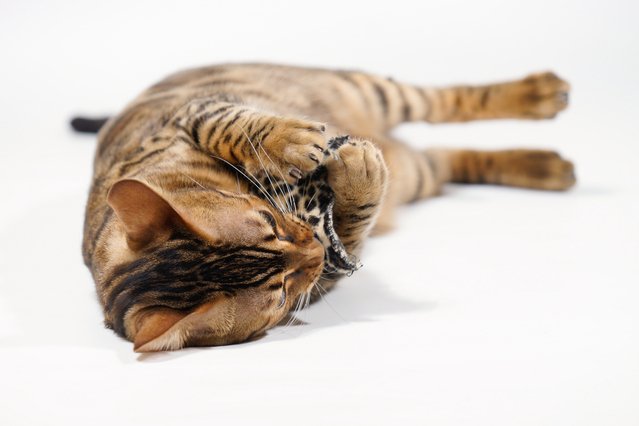This article looks at what could be considered the best cats for apartments or those with smaller abodes.
Thoughts of owning a cat drift towards an animal lazing around grooming itself, curled up in a basket or on a human’s lap, fast asleep.
All though these may be accurate depictions for many cats, those who own (let’s say) some of the more energetic breeds, may find them harder to relate to.

And this can be a problem if you place a high energy, demanding cat in a small apartment where it could well struggle to have its needs met.
Not only do you risk the health of your pet, but also the health of your belongings, wallpaper or carpets…
This article suggests characteristics to look for in cat breeds that may be more suited to apartment living, types of breed that fit these traits and how to maximise a small space to make apartment life as cat friendly as possible.
What Traits do the Best Cats for Apartments Have?
In general, you are looking for a cat that displays the following qualities:
Low Energy Levels: All cats require some form of regular exercise to maintain their physical and mental health (see How Long Do Bengal Cats Live? 12 Excellent Ways To Boost Life Expectancy).
Some though, have a much lower need and it is these that are some of the best cats for apartments and smaller houses. `
Enjoy Human Contact: It’s going to be much easier for both of you if you get along.
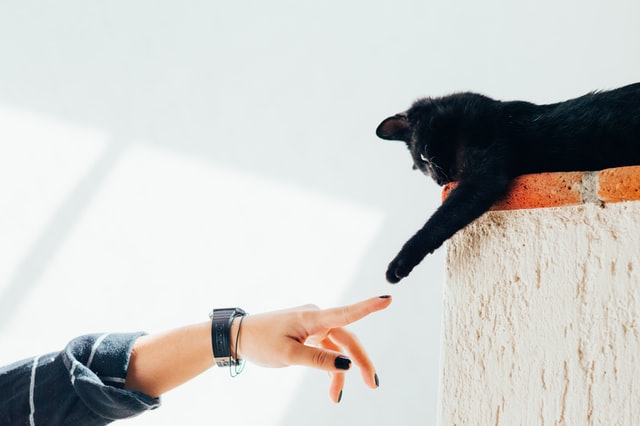
Again, all cats like their own space, even if only for short periods.
Those cat breeds that are happy to follow their owners around and play the lap cat role are going to be more suited to an apartment than those that get their stimulation elsewhere, or perhaps just see you as a 2-legged food resource.
Good With Other Pets: This gives them another source of stimulation and play, especially if you’re not around.
And of course, if they’re sharing a smaller space with another animal, it’s less problematic if they’re happy in each other’s company.
Less Inquisitive: Another way of saying this is “less intelligent.”
But why is a thick(er) cat better for apartments?
They have less of a need to be stimulated as often as breeds of higher intelligence, therefore a small home with adequate toys and a view of the outside world may suffice.
This is a very subjective trait to judge, so some breeds labelled ‘intelligent’ have made it onto this list, partly because they also have other apartment- friendly characteristics.
So which cats tend to fit the listed criteria?
The Best Cats for Apartments
- British Shorthair
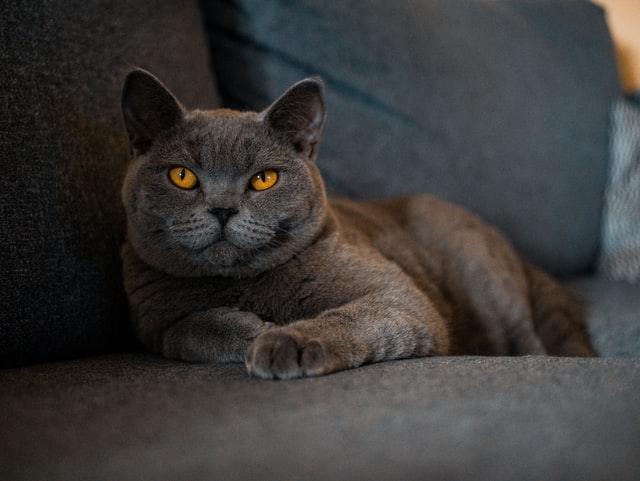
British Shorthairs are a very old breed that can apparently trace their ancestry back to domestic cats that used to inhabit ancient Rome. Their physical strength and hunting ability once made them much sought after as ‘working’ animals.
Why they’re suitable:
They are said to be a laid back, calm breed that can tolerate living with other animals. They enjoy human company, affection and are easy to train.
2. American Shorthair
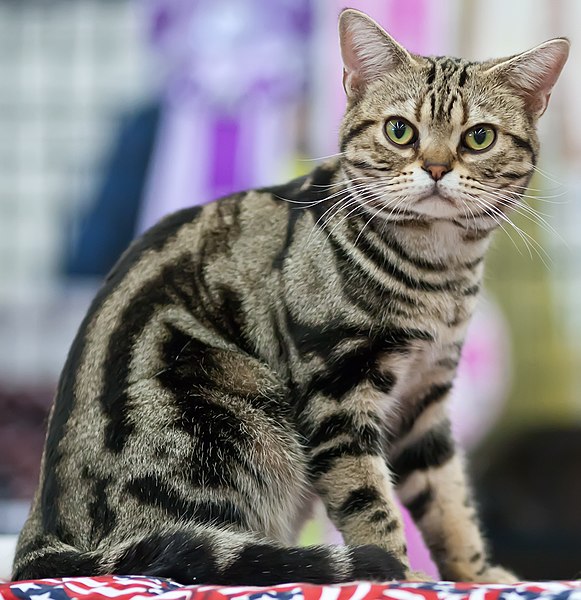
Another ‘working’ cat, the American Shorthair acquired its name in 1966 and was originally taken to North America from Europe aboard ships where they were employed as natural rat catchers.
Why they’re suitable:
American Shorthairs are considered to be a low maintenance, easy-going, affectionate breed that can happily live alongside other pets and children.
3. Ragdoll
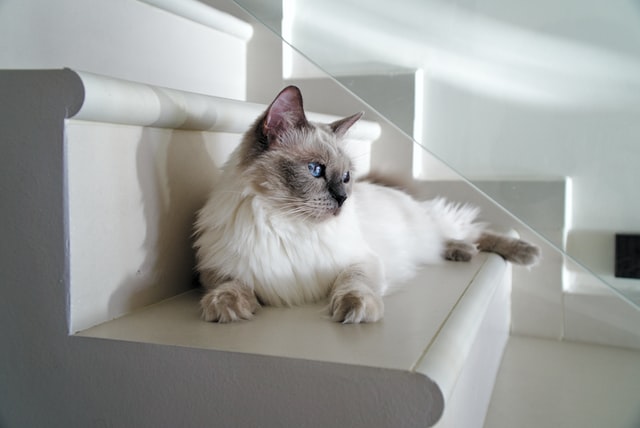
These long haired, luxurious, lazy looking cats get there name from the way their bodies tend to flop and go limp when being picked up or held.
Why they’re suitable:
Ragdolls are noted for their interest in humans and are nicknamed by some as “puppycats” because of their love of following people about the house. Ragdoll cat energy levels are moderate and although they like to play, they tend to stay on the floor. Being a well behaved, laidback lap cat helps make them ideal for apartment living.
4. Persian
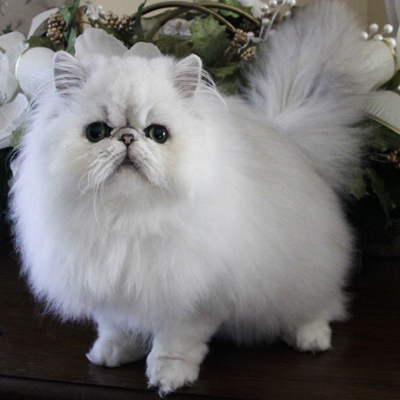
Despite the name, the actual origins of this popular breed remain uncertain. A symbol of luxury and indulgence with a rather snooty facial expression, Persian cats are actually made of two subtypes- show and traditional.
Why they’re suitable:
These non-demanding cats have gentle, easy-going personalities combined with a reluctance to climb or jump- unless it’s onto a bed they can drape themselves across. Persians make good house cats and are less vocal than other breeds.
5. Exotic Shorthair
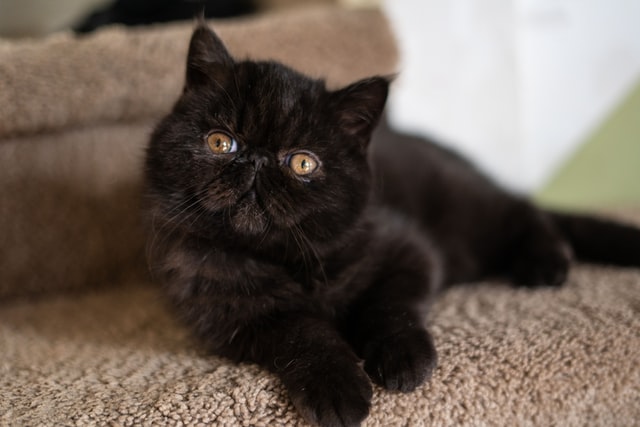
You might be forgiven for thinking these cats are just Persians that have had a shave, but Exotic Shorthairs are a breed of their own.
Why they’re suitable:
They do share personality traits with their Persian lookalikes. Being both affectionate (males more so) and quiet, they are happy apartment dwellers and considered to be not a particularly demanding pet.
6. Maine Coon
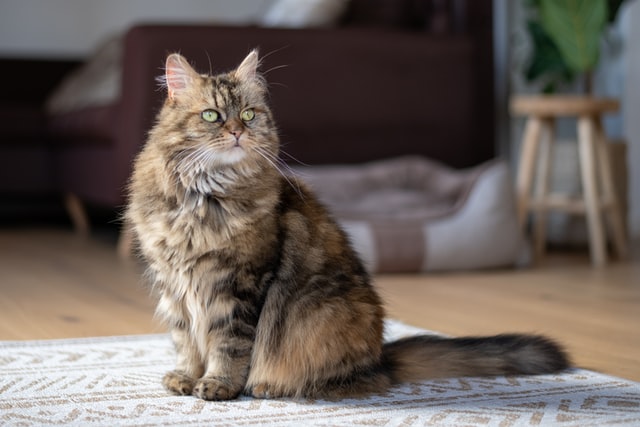
A native American cat, these hardy, former expert mouse-catchers are physically adapted to the harsh wintery environment of the US state they share their name with.
Why they’re suitable:
Perhaps not an obvious choice of breed to make a list of best cats for apartments owing to their size, but Maine Coons make good family pets as they’re good around children and other animals. Their intelligence makes them easy to train, and being an adaptable breed makes them suited to any type of home.
7. Russian Blue
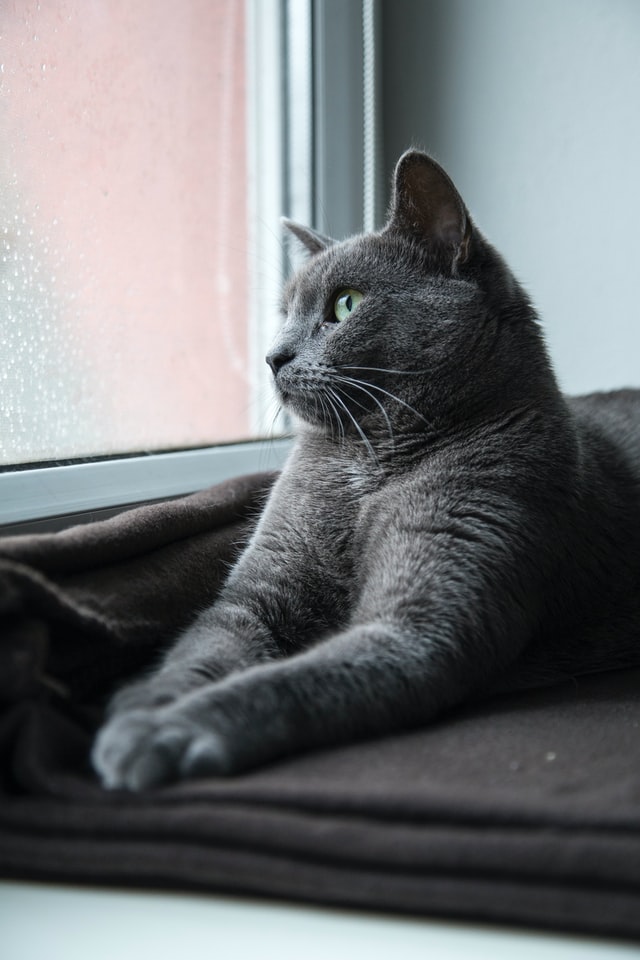
No, not a cocktail, but a breed believed to have originated in Northern Russia. Some say they are descendants of cats kept by the Tzars themselves.
Why they’re suitable:
Intelligent and affectionate, yet shy around strangers, Russian Blues are on the quieter side and satisfied with a comfortable abode that offers good views of the outside world. Playtime with their human housemates is also welcomed.
8. Scottish Fold
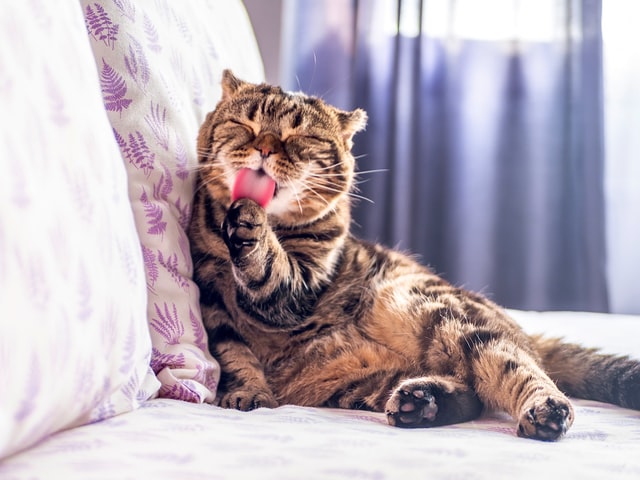
Yes, their ears do fold forward making them look like teddy bears. Interestingly though, not all Scottish Folds will develop this look, and actual folded-eared Scottish Folds are rarer than those with ‘regular’ ears.
Why they’re suitable:
Calm and generally on the quiet side, the Scottish Fold makes a great human companion and will do well in dwellings large or small.
9. Selkirk Rex
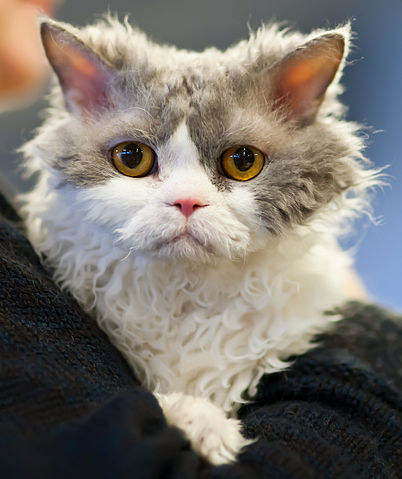
Sounds like a dinosaur but looks like a badly knitted jumper, the Selkirk Rex comes in both shorthaired and longhaired varieties.
Why they’re suitable:
Small apartment living requires a degree of tolerance which makes the Selkirk Rex ideal. Considered both gentle and sociable, the breed is more peace loving than the Cornish or Devon Rex, although they still need playtime with their human companions.
10. Birman
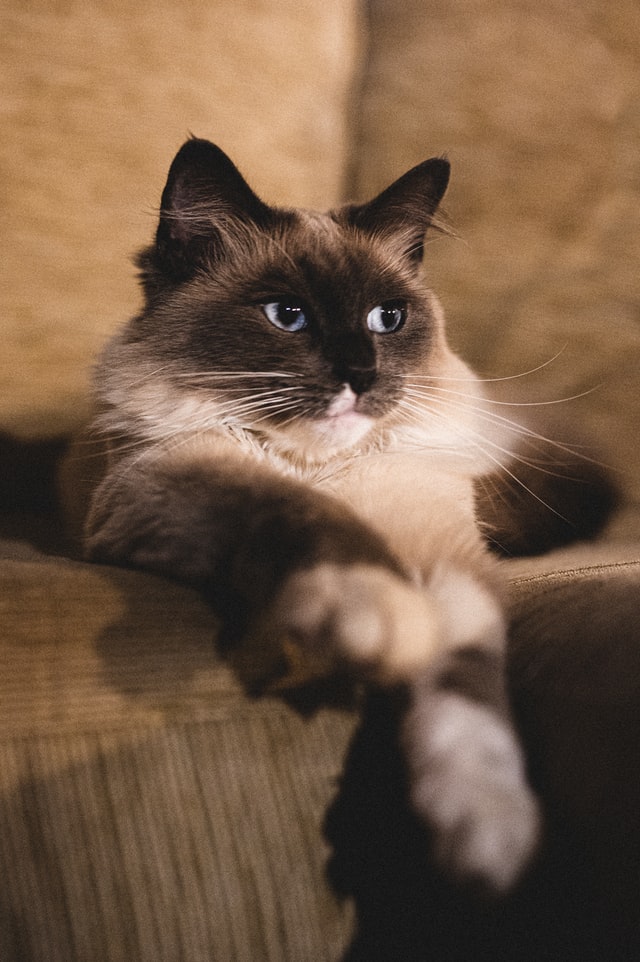
If only there was one on Alcatraz- in fact there could have been, as little is known about this breed’s origins. Being pointed cats, Birman kittens are born white with colours that develop as they age.
Why they’re suitable:
Birmans are known for having a gentle, tolerant demeanour and for being sociable with people and other animals- traits that will stand them in good stead for life as an apartment dweller.
11. Burmese

The Burmese is the result of a cross between a brown female cat from Burma (now Myanmar) and a Siamese. They have a silky coat that for a cat at least, is on the lower end of the shedding spectrum.
Why they’re suitable:
These cats love human company, affection and any dogs that share their living space- so much so, that they’re not happy when left alone for too long. Males are said to be the more relaxed gender, so may be that touch more preferential to owners of small homes.
12. Sphynx
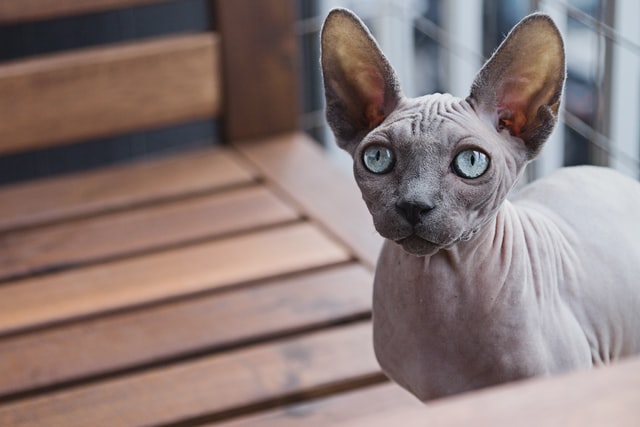
This well known hairless, wrinkly looking breed isn’t perhaps everyone’s idea of an ideal pet cat. Actually though, Sphynxes are not always hairless and the amount of hair or fur on a cat can vary.
Why they’re suitable:
They are said to enjoy human company more so than that of dogs or other cat breeds- partly because of their affectionate nature; partly because they need to try that bit harder to keep warm. Sphynx’s higher energy levels though may make them less suitable than other listed breeds, and they may not do so well if left alone for long periods.
13. Himalayan
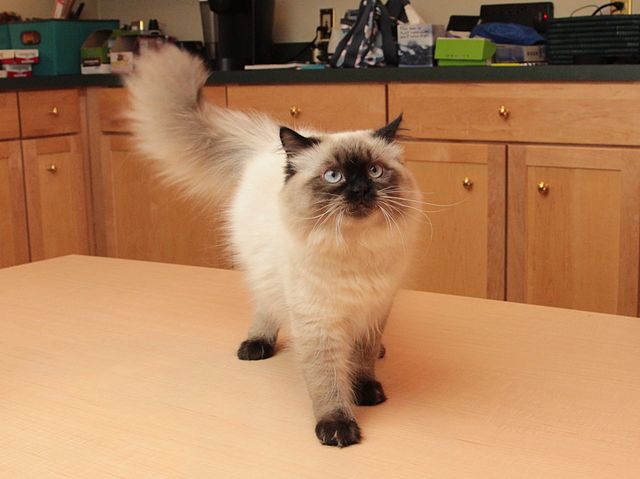
Himalayans combine the long-hair and facial features of a Persian cat with the pointed markings and blue eyes of the Siamese breed.
Some cat associations consider the Himalayan a unique breed in its own right, with others placing them under the Persian umbrella.
Why they’re suitable:
Like Persians, Himalayans are quiet and laid-back with a preference for indulging in the comforts of the home. They thrive in a more settled environment but still need mental stimulation- especially when left alone.
Cat Breeds to Avoid
High energy, inquisitive, intelligent, independent breeds that like to roam are clearly not going to be happy cooped up in an apartment all day and around people all day.
And neither will you be if there needs aren’t met, as not only will these cats have a higher risk of developing health problems, but destructive, ill-tempered behaviour could well set in.
Individuals within a breed are by no means identical, but in general, the following breeds are some of those that are perhaps best avoided if space is at a premium:
- Bengal
- Abyssinian
- Siberian
- Siamese
- Devon Rex
Can Indoor Cats Become Outdoor Cats?
In a word, or if you prefer two, then, yes probably.
Some will naturally gravitate towards that open door or window, others may need a little more coaxing- it just depends on their personality.
With anything new, there is often an element of hesitancy, but once a cat feels safe, they generally have little problem adapting to the outdoors.
Obviously it may be harder for cats that have spent years inside to make the transition, indeed they may not all.
But whether they should go out in the first place is another question entirely….
Should People Who Live in Apartments Let Their Pet Cats Roam Freely or Should They Remain Indoors?
There is no right answer to this.
As we’ve seen, some breeds are more suited to apartment life, and indeed, prefer indoor living.
In his book, Dr. Yuki Hattori says that cats SHOULD be kept indoors, and those that do, live longer, healthier lives, providing their physical and mental needs are still met (see How Long Do Bengal Cats Live? 12 Excellent Ways To Boost Life Expectancy).
Anecdotally, I have read about some cats being much ‘happier’ and subsequently more settled indoors, after being allowed to roam freely outside.
Equally, I did hear about another that was hit and killed by a car not long after outdoor access was given, and some cats have been known to disappear for days on end before returning home or being found by their owners.
Where you live may help aid your decision as proximity to main roads, other cats or wild animals may increases the risk of your cat being harmed.
Limited access to outside is a possible compromise, in the form of a bought or custom built ‘catio’, or cat window box/run.
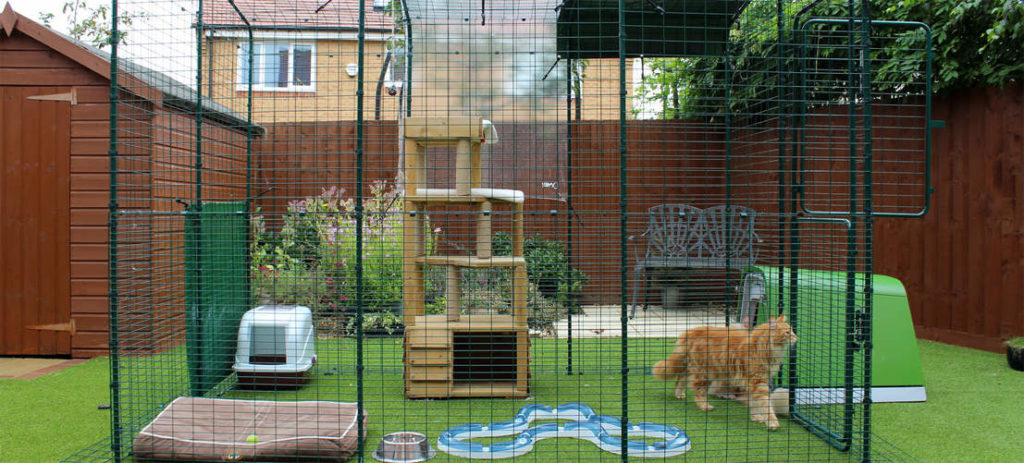
You may also be able to train your cat to wear a harness and go on walks (see The Best Bengal Cat Harness 2021).
If you’re set on keeping your feline indoors, then we’ll see how you can help enrich their living environment…
What are Some Great Ways to Catify an Apartment?
Although the best cats for apartments have desirable temperaments, you will still need to think about making the most of what you can offer.
Fortunately, much can be done in a small space to help keep a cat at its mental and physical peak.
This includes:
- Installing one or more cat trees, especially near windows
- Building shelving or walkways, which also helps increase the size of your cat’s ‘territory’
- Adding a cat wheel (see Which Bengal Cat Wheel to Buy? 9 of the best)
- Leaving empty boxes lying around or taping a number together with holes cut in to form a kind of cardboard cat ‘castle’
- Buying mental puzzle toys
- Playing with your cat- wand toys are particularly good or games like ‘fetch’ (see Best Toys For Bengal Cats [in the world] 2021)
- ‘Rotating’ toys that you leave out to maintain an element of novelty
- Adding a scratching post or two
You may need to think about installing grills or mesh over windows to keep your cat from escaping.
It’s also important to keep a quiet, comfortable area or small space of seclusion for your cat, for those times it simply wants to be alone or has just had enough of you…
Summary
A small living space does not have to be a barrier to owning a cat.
Yes, there is much to think about, but this article has provided a great starting point for you to explore some of the best cats for apartments and small homes.
Purchasing cat trees, a cat wheel or even just a few empty boxes can help enrich the living environment, and of course, there’s no substitute for human-feline interaction and play.
As long as these best cats for apartments have all their needs met, the size of your home is much less important.
Further Reading:
Please note, Amazon links on this page are affiliate links from which I’ll receive a small percentage if you purchase at no extra cost to you. It all helps. Thanks.


